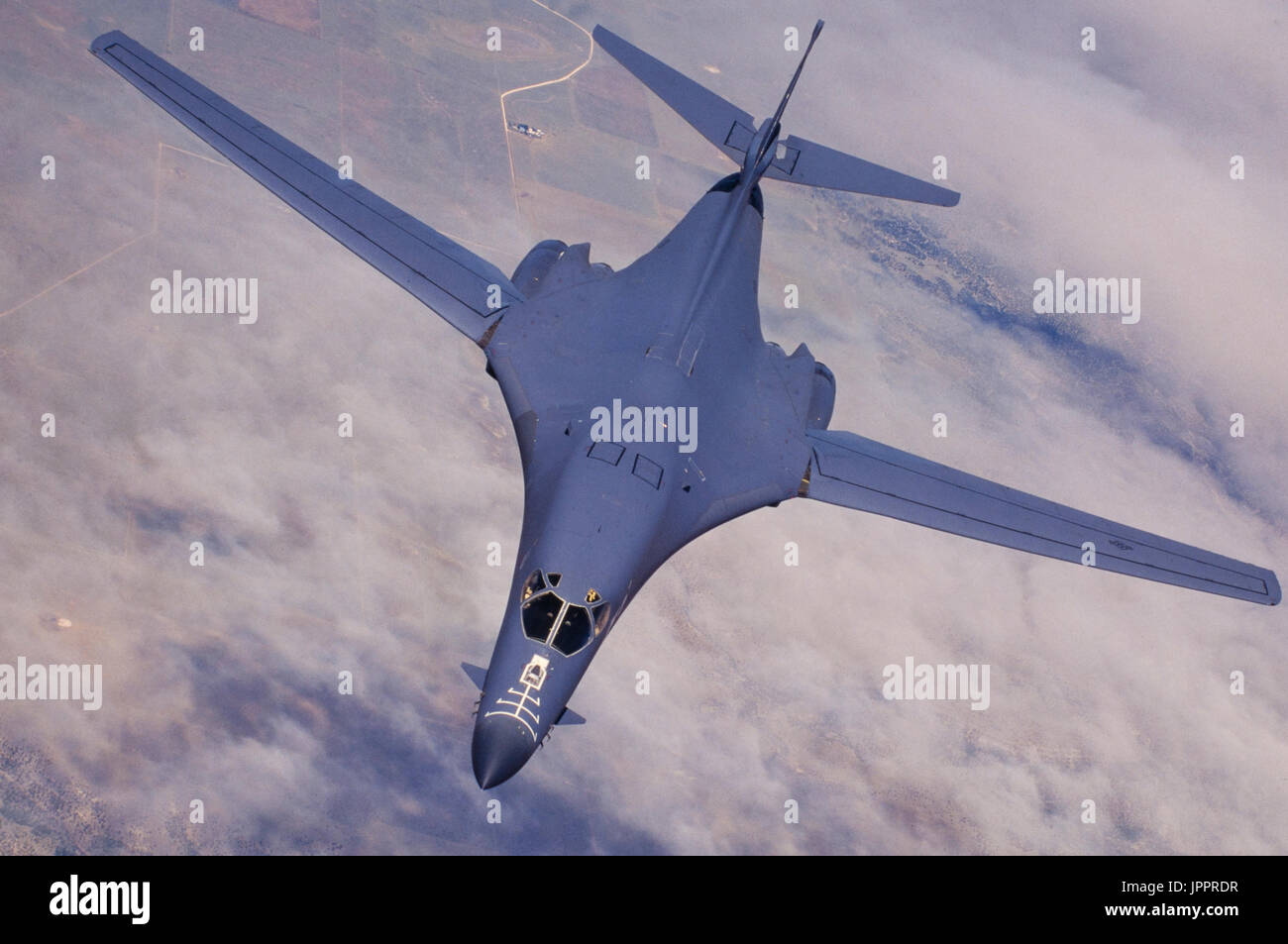A supersonic U.S. Air Force Lancer B-1 bomber in flight.

Image details
Contributor:
Ken Hawkins / Alamy Stock PhotoImage ID:
JPPRDRFile size:
19.8 MB (671.5 KB Compressed download)Releases:
Model - no | Property - noDo I need a release?Dimensions:
3223 x 2142 px | 27.3 x 18.1 cm | 10.7 x 7.1 inches | 300dpiDate taken:
1 August 2017Location:
South Dakota, United StatesMore information:
The Rockwell B-1 Lancer[N 1] is a supersonic variable-sweep wing, heavy bomber used by the United States Air Force (USAF). It is commonly called the "Bone" (from "B-One"). It is one of three strategic bombers in the USAF fleet as of 2017, the other two being the B-2 Spirit "Stealth Bomber", and the B-52 Stratofortress. The B-1 was first envisioned in the 1960s as a platform that would combine the Mach 2 speed of the B-58 Hustler with the range and payload of the B-52, ultimately replacing both. After a long series of studies, Rockwell International (now part of Boeing) won the design contest for what emerged as the B-1A. This version had a top speed of Mach 2.2 at high altitude and the capability of flying for long distances at Mach 0.85 at very low altitudes. The combination of the high cost of the aircraft, the introduction of the AGM-86 ALCM cruise missile that flew the same basic profile, and early work on the stealth bomber all significantly affected the need for the B-1. This led to the program being cancelled in 1977, after the B-1A prototypes had been built. The program was restarted in 1981, largely as an interim measure while the stealth bomber entered service. This led to a redesign as the B-1B, which had somewhat lower top speed at high altitude of Mach 1.25, but improved low-altitude performance of Mach 0.96. The electronics were also extensively improved during the redesign, and the airframe was improved to allow takeoff with the maximum possible fuel and weapons load. The B-1B began deliveries in 1986 and formally entered service with Strategic Air Command (SAC) as a nuclear bomber in 1986. By 1988, all 100 aircraft had been delivered.